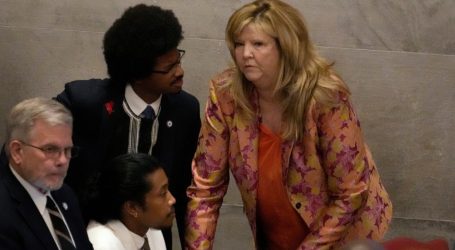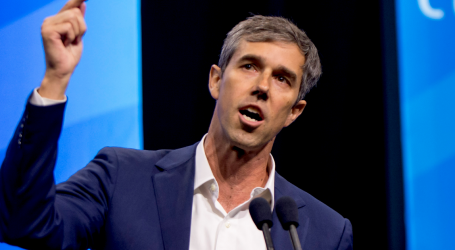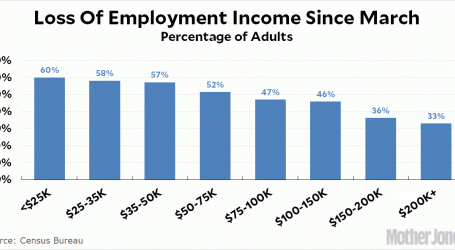The Green Movement’s Best Weapon Has Become a Problem
The United States is on the brink of its most consequential transformation since the New Deal. Read more about what it takes to decarbonize the economy, and what stands in the way, here.
In the late ’60s and early ’70s, when runaway development with little study or oversight led to the draining of the Everglades, the Santa Barbara oil spill, and the Cuyahoga River catching fire, to name but a few catastrophes, the National Environmental Policy Act and its state-level counterparts, like the California Environmental Quality Act (CEQA), were passed to “create and maintain conditions under which man and nature can exist in productive harmony.” These laws demanded that the environmental impacts of proposed projects be thoroughly studied, discussed with the public, and mitigated where feasible.
Sounds totally reasonable, right? But as policymakers grapple with climate change and a national housing crisis, there’s a growing recognition that, as law professors J.B. Ruhl and Jim Salzman put it, the Green New Deal is an awkward fit with the old green laws. City councils and county commissions are using these laws to delay, indefinitely, almost any housing or green-energy project that they or their supporters happen to dislike.
Consider an infamous example from San Francisco. Environmentally, the project at 469 Stevenson Street was about as good as they come. It was located smack in the middle of downtown, a block from commuter rail, in a priority development area designated by the regional climate and housing plan. It would have replaced a Nordstrom’s valet parking lot with some 500 new homes—73 of them designated for low-income residents, plus funds for additional low-income units elsewhere. Most of the community groups from the surrounding area welcomed replacing asphalt with apartments. In accordance with CEQA, the developer had conducted a 1,000-page environmental impact report, which found that the project’s only “significant” impact would be a less than 1 percent increase in shadows on nearby plazas. The city’s planning commission approved the project.
But one local community leader was mad that the developer had turned down his suggestion of donating more than a third of the site to the city and proceeding with a smaller project. So he turned to a favorite tool of NIMBYs throughout California, and appealed the project’s CEQA clearance to the board of supervisors, citing worries over gentrification but saying he’d drop the challenge if the developer agreed to his land-donation scheme. It’s a form of “greenmailing” common in California development projects.
The board of supervisors, which is notoriously dysfunctional when it comes to getting housing built, had no authority to impose a land-donation condition on the project. Doing so would have violated California’s Housing Accountability Act, which prohibits most conditions of approval that reduce housing density, and it might have run afoul of the takings clause of the US Constitution, too. So the board exercised its CEQA discretion instead. And it’s a broad discretion. Building permits are issued by agencies staffed by civil servants and area experts, and any objections that don’t cite CEQA are decided by a board of permit appeals—also staffed by experts. But CEQA challenges are decided by the city’s elected officials—who have no expertise in, say, air quality or hydrology—and their decision to hold up a project stands even if it flies in the face of state housing or climate goals. The intention behind CEQA was to ensure environmental stewardship; the reality can be anything but.
The supes granted the appeal and kicked the project back to the planning department, telling it to require the study of various things that don’t fall under the purview of CEQA, like possible gentrification impacts (a subsequent study found none; indeed, leaving the lot as is would speed displacement) or geotechnical risks (there’s a whole separate process for that).
The supes made no bones about the fact their real objections to the Stevenson Street project had nothing to do with the environment. One supervisor said the problem was that the developer hadn’t negotiated a deal with TODCO, the group that led the charge against the project, and that spends a lot of money to stay in the supes’ good graces. Another said the project was a “bad deal,” citing low affordability levels. Still another supervisor remarked that he’d “feel very good about this vote” if the site “become[s] a 100 percent affordable project,” but that if “15 years from now it’s still a parking lot, then I will not feel good.” The motives appeared to be a mix of misguided good intentions, political back-scratching, and the board’s long-standing habit of blocking housing at every turn.
The city—beset by skyrocketing housing prices and a homelessness crisis—erupted in outrage. “I just don’t understand how we ever get housing built in the city if we continue to let the perfect be the enemy of the good,” noted one supervisor who voted for the project.
As the developer was shelling out $750,000 for another year of pointless studies, a YIMBY (“Yes in My Backyard”) group went to court. They argued that the city’s frivolous decision to require further environmental study amounted to a de facto violation of state housing laws. But the judge ruled that state housing laws basically do not apply until after a city certifies a project’s environmental review as complete. And, although CEQA nominally puts a one-year limit on environmental review, the court held that this deadline is just advisory and that courts have no authority to order a city to take any action on a project—or even to review the city’s demands—while the environmental review is ongoing. Under this logic, decades could pass and still a project’s proponents would have no legal recourse—even if the city’s demands for additional study are frivolous, have nothing to do with the environment, or constitute a transparent ruse to shake down a developer.
A little more than a year after the supes’ vote, the planning department circulated the revised environmental impact report. Although the supes could have demanded yet more studies, the glare of bad publicity had gotten very hot. Sustained coverage by the San Francisco Chronicle, an investigation by the state housing agency, agitation by local YIMBYs, and the attention of one apoplectic law professor (yours truly) had put the city in a delicate spot. The revised CEQA study faced no opposition from the planning commission. The community leader who had blocked it gloated that, given that rising construction costs and a weak market had stalled most development, he would no long bother to oppose it.
San Francisco is a poster child for good intentions run amok, but CEQA has been used across the state to block everything from solar farms, to infill development, to bike lanes. Oil companies are using it to challenge Los Angeles’ drilling ban. The city of Susanville used it to try to keep a prison from being decommissioned. And NIMBYs used it to block the University of California, Berkeley, from building desperately needed student housing, over fears of increased noise. “My students are not pollution, and an *environmental law* shouldn’t force them to drive from an hour away to come to class,” tweeted one enraged Cal professor.
Similar tactics, using similar laws as the instrument, are blocking crucial infrastructure across the county. Electrification, green energy, wildfire, and housing solutions depend on countless permitting decisions by cities and counties, each exercising a modicum of discretion. These projects are not without annoyances. Few people welcome the noisy construction site next door, the smoky controlled burn, the nighttime hum of the wind turbine, or the solar farm’s sprawl.
Environmentalists know that if climate policy were decided by local officials, we’d burn up the planet. They have every political incentive to cater to annoyed neighbors and none to heed the larger effects of local choices. Yet, California, in the name of the environment, bafflingly gives cities and counties unfettered political discretion to delay indefinitely the very things the environment needs.
This is no way to save a planet. Or govern a state. Former Gov. Jerry Brown once called reforming CEQA “the lord’s work,” but did not pursue it. But maybe, finally, there is hope for reform. After the court of appeals issued its Berkeley students pollution ruling, the current governor, Gavin Newsom, declared, “California cannot afford to be held hostage by NIMBYs who weaponize CEQA to block student and affordable housing…The law needs to change.”
He should know; he used to be mayor of San Francisco.





